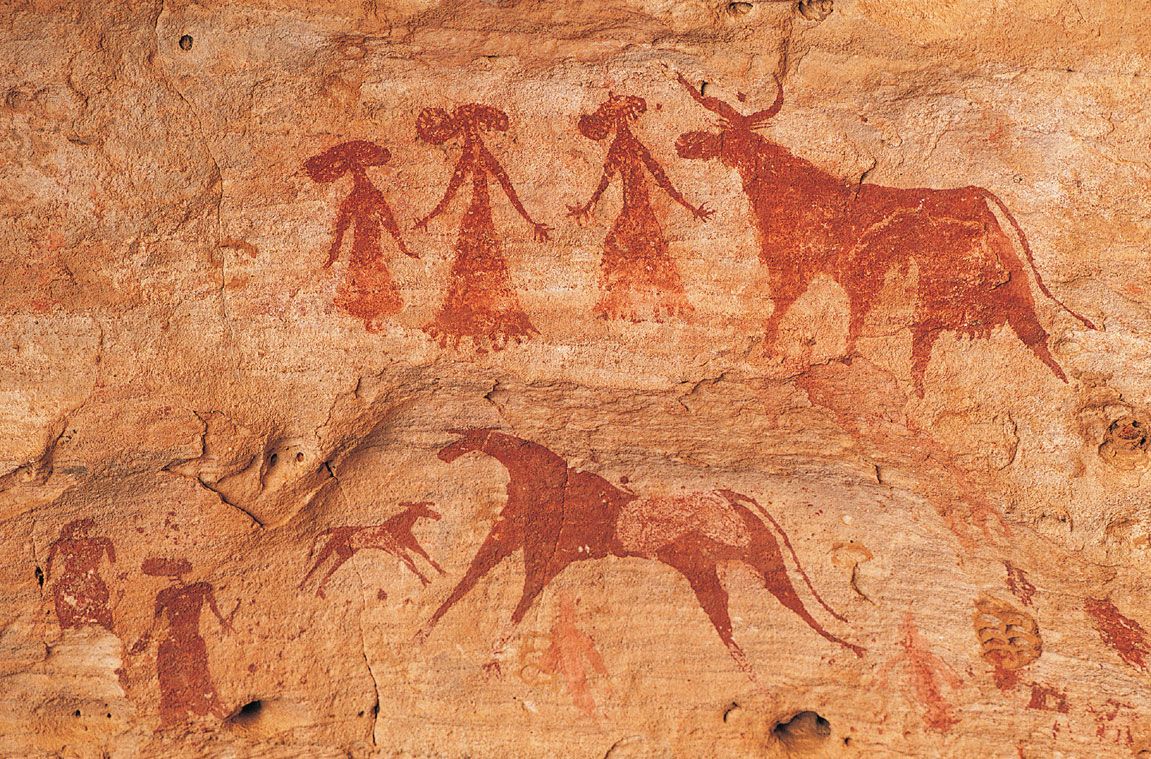Art Appreciation/History: Style Guide
1/26
Earn XP
Description and Tags
These flashcards cover key styles and movements in art history, detailing their characteristics and significance.
Name | Mastery | Learn | Test | Matching | Spaced |
|---|
No study sessions yet.
27 Terms

Pre-Historic Art
Cave paintings and small, portable sculptures characterized by vitality and movement.
Paleolithic Period
The nomadic phase of Pre-Historic art before agriculture.
Neolithic Period
The agricultural phase of Pre-Historic art.
Ancient Near East Art
Art from 3500 to 500 BC featuring bronze, small statues, and ziggurats.
Ancient Egypt
Pyramids obviously
Greek Art
Art of the 5th century BC focused on beauty, harmony, and the idealized view of man.
Roman Art
Art from the 2nd century BC to 4th century AD, more realistic than Greek, showcasing people as they truly look.
Christian Art
Art from the 3rd century AD focusing on biblical themes with a move toward symbolic forms.
Byzantine Art
East art from the 6th to 15th century that retained Greek harmony with biblical themes.
Medieval Romanesque Art
12th century medieval art marked by heavy architecture and twisted figures.
Gothic Art
13th-14th century art characterized by great cathedrals, flying buttresses, and realism.
Italian Renaissance
14-16th century art that revived Greco-Roman ideals, portraying man as a noble creature.
Northern Renaissance
Renaissance art in Northern Europe that emphasized realism and emotion.
Baroque Art
17th-century art that added drama, movement, and light to realism.
Rococo Art
18th-century highly ornamental and light-hearted style favored by the aristocracy.
Neo-Classicism
19th-century art characterized by a precise, linear style and classical coolness.
Romanticism
19th-century art emphasizing emotion, nature, and the psyche.
Realism
19th-century art that portrayed contemporary life and the modern world.
Impressionism
19th-century art capturing light effects on surfaces and nature, with loose brushwork.
Post-Impressionism
An extension of Impressionism focusing on form, structure, emotion, and symbolism.
Art Nouveau
19th-century ornamental art featuring floral and sensual designs.
Fauvism
A French form of Expressionism known for intense color and flattened space.
Cubism
Early 20th-century art that depicted objects from multiple viewpoints simultaneously.
Dada
An anti-art movement that focused on ideas and statements rather than aesthetics.
Surrealism
An art movement that explored the subconscious and dream imagery.
Conceptual Art
Art that prioritizes ideas over visual or material aspects.
Post-Modernism
Art style characterized by eclecticism and the blending of past styles.